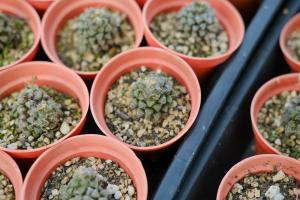What Is the Process of Plants Absorbing Water?
Water is essential to the survival of plants. Without it, they cannot grow, reproduce, or complete essential life processes such as photosynthesis. But have you ever wondered how plants actually absorb water from the soil? Here is a brief overview of the process.
Step 1: Root Hairs
The first step in the process of plants absorbing water involves root hairs. These tiny structures are responsible for increasing the surface area of the root system, allowing plants to absorb more water from the soil. As water flows through the soil, it enters the root system through the root hairs.
Step 2: Osmosis
Once the water enters the root system, it moves through the plant via a process called osmosis. Osmosis is the movement of water from an area of high concentration, such as the soil, to an area of lower concentration, such as the inside of the plant cells. This movement happens because the plant cells have a higher concentration of solutes, such as sugars and salts, than the surrounding soil. As a result, water molecules are drawn into the cells via osmosis.
Step 3: Xylem
After entering the root system and moving through the plant cells, the water is transported to the rest of the plant via xylem. The xylem is a system of tubes that runs through the plant, starting from the roots and ending in the leaves. The tubes are made up of specialized cells that allow water to move upwards through the plant. This upward movement of water is known as transpiration.
Step 4: Stomata
The final step in the process of plants absorbing water involves stomata. Stomata are tiny openings on the leaves of the plant that allow for the exchange of gases, including the release of oxygen and the uptake of carbon dioxide. Water vapor is also released through the stomata as a byproduct of the process of photosynthesis. This release of water vapor creates a negative pressure that draws the water up through the xylem and into the leaves of the plant.
Conclusion
The process of plants absorbing water is a complex and essential one. It involves the tiny root hairs increasing surface area, osmosis and the movement of water through plant cells, the transport of water via xylem, and the release of water vapor through stomata. Understanding this process is critical to ensuring the health and survival of plants in our environment.

 how many times do yo...
how many times do yo... how many planted tre...
how many planted tre... how many pine trees ...
how many pine trees ... how many pecan trees...
how many pecan trees... how many plants comp...
how many plants comp... how many plants can ...
how many plants can ... how many plants and ...
how many plants and ... how many pepper plan...
how many pepper plan...






























